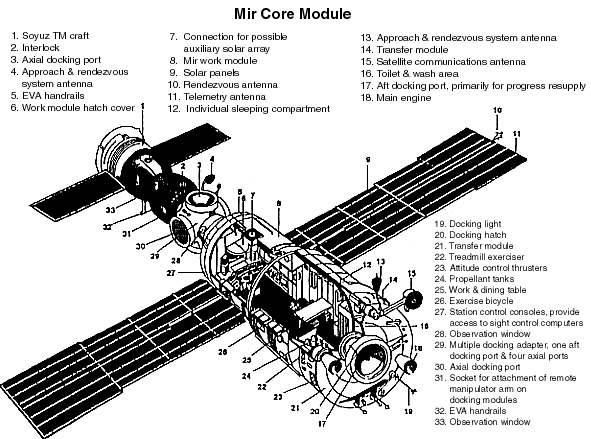Mir Core Module
Peace or World), DOS-7, was the first module of the Soviet/Russian Mir space station complex, in low Earth orbit from 1986 to 2001.
[2] Designed as a 'habitat' or 'living' module, DOS-7 possessed less scientific apparatus than its predecessors (lacking, for instance, the large imaging camera which had partially obstructed the living areas of previous stations), instead providing crews with a comfortable living area on the station.
The spacecraft also featured a small trash/science airlock, and an aluminium hull (about 1 to 5 mm thick) with several portholes with hatches for viewing out.
[2] Inside, the spacecraft featured two-toned colours (designed by interior design architect, Galina Balashova, carrying over her concept of comforting interior décor from Soyuz and Salyut), [3] [4] fluorescent lighting, and one toilet.
Four of them, which were located radially on the node on the front of the module, were called "berthing" ports designed for station expansions.
[2] At one point, it was planned for Buran to visit the station around 1992 and exchange the existing core module for a new one.








